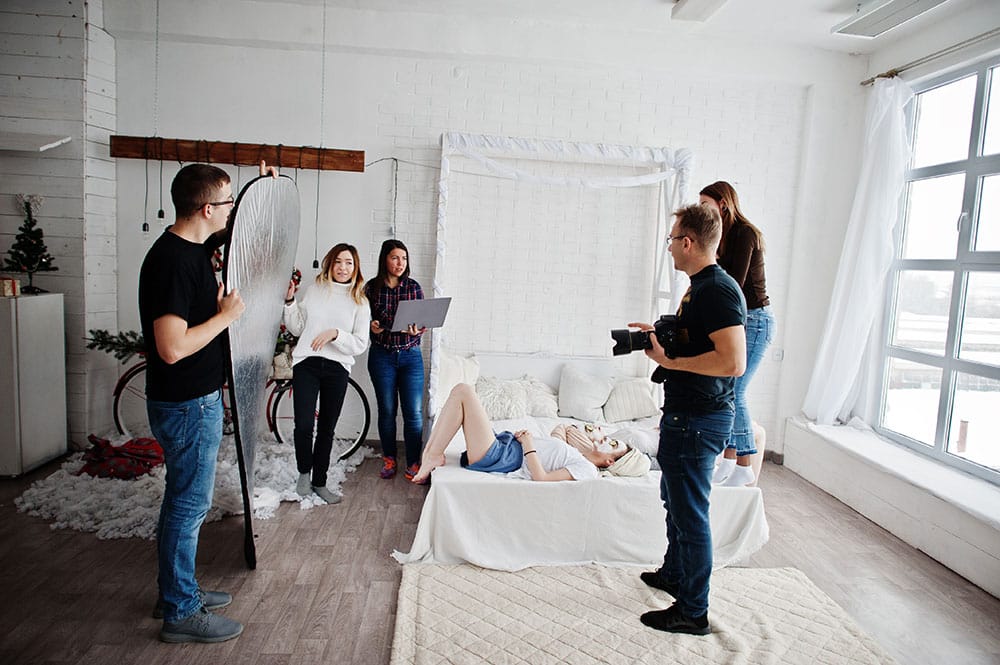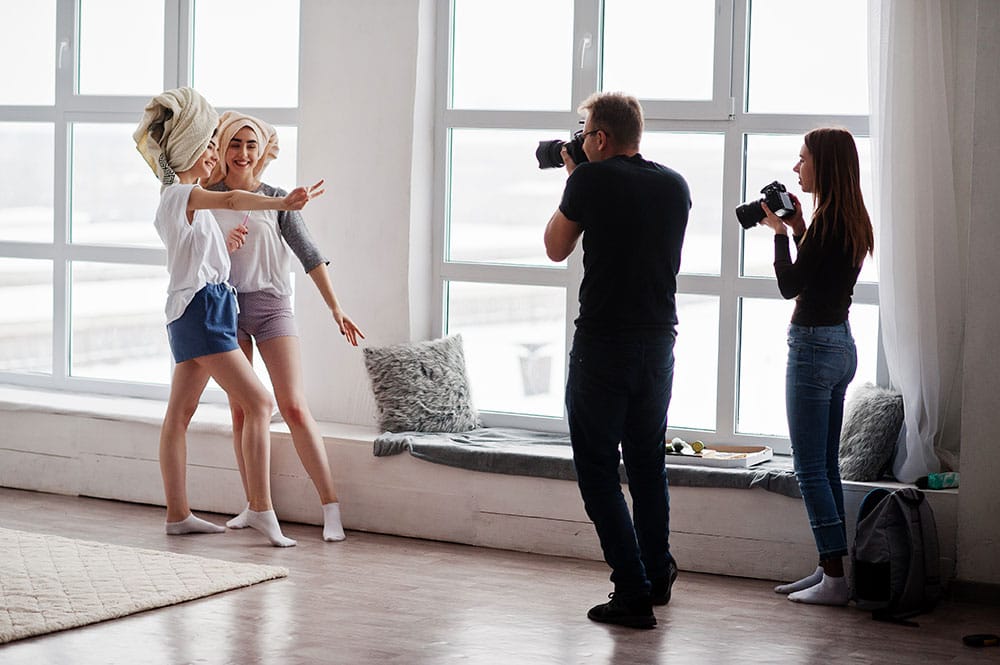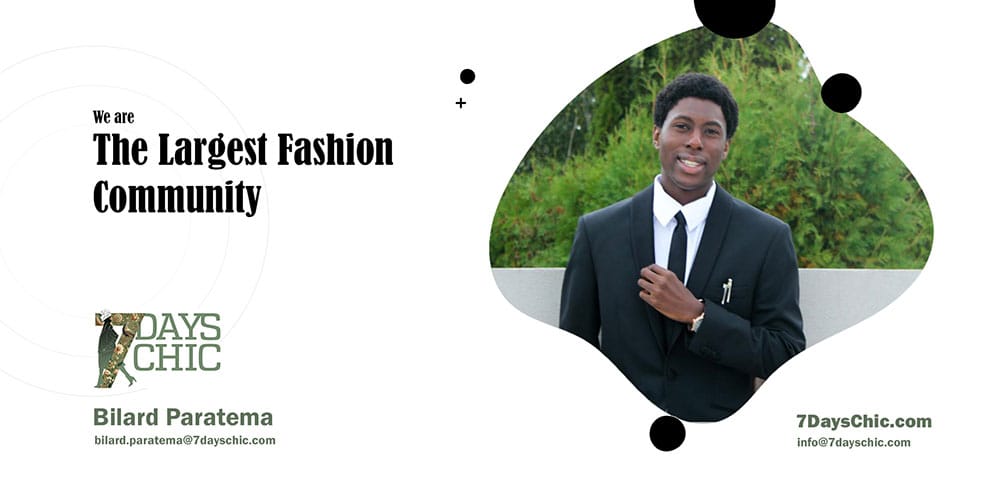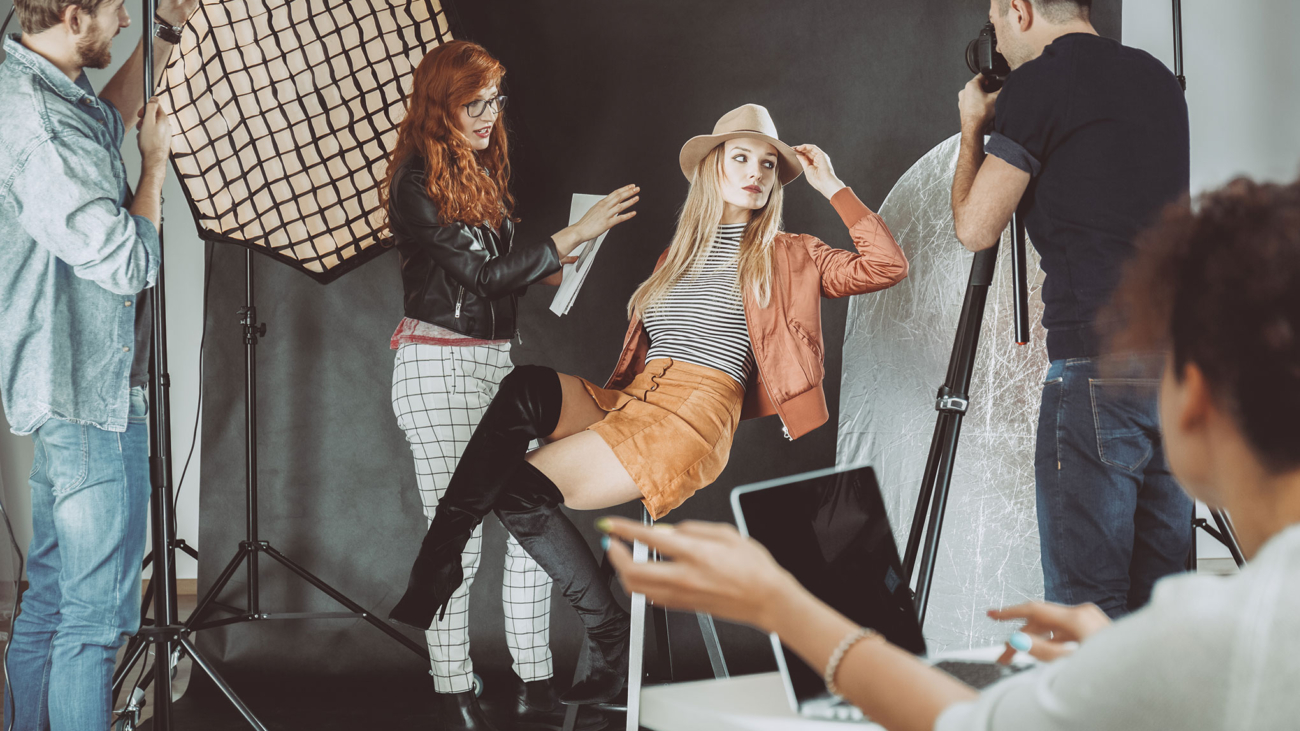4. The Role of Fashion in Storytelling Collaboration
Collaboration is a cornerstone of effective storytelling in fashion modeling and photography. It involves the seamless integration of various creative talents to bring a narrative to life. This section explores the vital roles played by photographers, directors, stylists, makeup artists, brands, and creative teams in crafting compelling visual stories.
Photographers and Directors
Photographers and directors are pivotal in shaping the visual narrative of a fashion campaign. Their understanding of the creative vision is essential for translating concepts into compelling imagery. This understanding begins with a thorough discussion of the theme, tone, and desired emotional impact of the shoot.
- Creative Briefs: A well-defined creative brief serves as a roadmap for everyone involved. It outlines the objectives, key messages, and stylistic preferences, ensuring that all team members are aligned with the overarching vision. This document can include references to similar campaigns or mood boards that encapsulate the desired aesthetic.
- Collaboration with Designers: Photographers must also collaborate closely with fashion designers to grasp the essence of the collection being showcased. Understanding the designer’s intent allows photographers to capture garments in ways that highlight their unique features while aligning with the broader narrative.
Effective communication is crucial for fostering collaboration among team members. Photographers and directors must articulate their vision clearly while remaining open to input from others.
- Regular Check-ins: Scheduling regular meetings or check-ins during pre-production helps ensure that everyone is on the same page. This collaborative dialogue allows for adjustments based on feedback and fosters a sense of teamwork.
- Encouraging Creativity: By creating an environment where team members feel comfortable sharing ideas, photographers can tap into diverse perspectives that enhance storytelling. For instance, a stylist may suggest specific poses that highlight garment details, while a makeup artist might propose looks that complement the overall theme.
Stylists and Makeup Artists
Stylists and makeup artists are integral to the fashion industry, serving as the creative forces that enhance visual storytelling. Stylists curate looks that align with a brand’s identity, meticulously selecting clothing and accessories to create cohesive narratives that resonate with audiences. They translate concepts into visual experiences, ensuring that each element contributes to the overall aesthetic and message of a photoshoot or fashion show. Their role extends beyond mere selection; they are trend interpreters and narrative builders who evoke emotions through their styling choices, making the clothing relatable to consumer.
1. Aligning Styling and Makeup with the Narrative
Stylists and makeup artists play a crucial role in shaping the visual narrative through their choices in clothing, accessories, and makeup. Their work must align seamlessly with the story being told.
- Wardrobe Selection: The stylist’s selection of clothing should reflect not only the brand’s identity but also the emotional tone of the campaign. For example, if a collection focuses on empowerment, stylists might choose bold colors and structured silhouettes that convey strength.
- Makeup Choices: Makeup artists enhance storytelling by creating looks that resonate with the narrative. A natural makeup palette may evoke authenticity and simplicity, while dramatic makeup can amplify themes of glamour or fantasy.
2. Creating Cohesive Visuals
The collaboration between stylists, makeup artists, and photographers ensures thatall visual elements work harmoniously together:
- Mood Boards: Utilizing mood boards during pre-production helps align everyone’s vision. These boards can include color schemes, fabric swatches, and inspirational images that guide styling decisions.
- Feedback Loops: Continuous feedback during fittings and rehearsals allows stylists and makeup artists to refine their choices based on how they translate on camera. This iterative process enhances cohesion between styling and photography.
Brands and Creative Teams
Brands rely on collaborative efforts to translate their stories into visual language effectively. The synergy between brand representatives and creative teams is essential for maintaining brand identity throughout campaigns.
- Brand Values: Understanding core brand values is crucial for creative teams when developing narratives. For instance, a brand focused on sustainability may prioritize eco-friendly materials in both styling choices and production methods.
- Narrative Consistency: Creative teams must ensure that all visual elements—photography style, model selection, wardrobe choices—reflect consistent messaging that aligns with brand identity. This consistency reinforces brand recognition among consumers.
Collaborating to Ensure Brand Consistency
Collaboration among brands and creative teams fosters brand consistency across various platforms:
- Cross-Platform Strategies: As fashion marketing increasingly spans multiple channels (social media, print ads, digital campaigns), maintaining a cohesive narrative across these platforms is vital. Brands should work closely with creative teams to develop strategies that ensure messaging remains consistent—whether in an Instagram post or a magazine editorial.
- Feedback Mechanisms: Establishing feedback mechanisms allows brands to review initial concepts before final execution. This iterative process ensures that all elements align with brand values while allowing for creativity within defined parameters.

5. Types of Stories in Fashion Modeling
Fashion modeling is a powerful medium for storytelling, allowing brands to convey complex narratives through visual elements. This exploration delves into four primary types of storytelling in fashion modeling: Editorial Storytelling, Runway Storytelling, Campaign Storytelling, and Cultural and Historical Narratives. Each type employs unique techniques and approaches to engage audiences and communicate brand values.
Editorial Storytelling in Fashion
Editorial storytelling in fashion is a sophisticated art form that transcends mere clothing display. It involves crafting high-fashion, artistic narratives that engage readers on multiple levels, inviting them into a world defined by emotion, concept, and aesthetic beauty. This approach is prevalent in high-fashion magazines where each editorial serves as a visual journey that combines fashion with storytelling.
Telling a Story Across Multiple Pages or Shots
In editorial storytelling, the flow of images is essential for maintaining reader engagement. The arrangement and sequencing of photographs can create an immersive experience that captivates audiences.
Sequential Imagery
The sequence in which images are presented can establish a rhythm that guides viewers through the narrative:
- Mood Setting: Starting with darker tones and somber expressions sets an introspective mood that invites readers to reflect on deeper themes. As the story progresses, transitioning to brighter colors and joyful poses signifies resolution or hope. This shift not only keeps readers engaged but also allows them to experience an emotional journey alongside the visuals.
- Visual Pacing: The pacing of images—how quickly one transitions to another—can also influence narrative tension. Rapid cuts between images can create excitement or urgency, while slower transitions allow for contemplation and reflection.
Narrative Arcs
Just like traditional storytelling, editorials often follow a narrative arc comprising introduction, conflict, climax, and resolution:
- Introduction: The opening images introduce key themes and characters (models) while setting the tone for the story. This initial engagement captures readers’ attention and establishes their expectations.
- Conflict: The middle section typically presents conflict or tension—whether through contrasting imagery or emotional expressions—that challenges the characters (models) within the narrative framework. This conflict could be represented visually through juxtaposed elements like light versus dark or chaos versus calm.
- Climax and Resolution: The climax builds toward a pivotal moment where emotions peak—often represented through striking visuals or dramatic poses. Following this climax, the resolution brings closure to the narrative arc, showcasing transformation or harmony in both characters and clothing.
Runway Storytelling in Fashion
Runway shows serve as dynamic platforms for storytelling in the fashion industry, allowing designers to present their collections while conveying thematic narratives that resonate with audiences. These events are more than mere showcases of clothing; they are immersive experiences that engage the senses and provoke thought. This exploration delves into how designers tell stories through runway shows, focusing on conceptual themes, choreography and presentation, and the integral role of models in conveying the narrative.
How Designers Tell Stories Through Fashion Shows
Each runway show typically revolves around a central theme that encapsulates the designer’s vision for the collection. This theme can draw inspiration from a variety of sources, including historical events, cultural influences, personal experiences, and even social issues.
- Historical Inspirations: For example, a designer might create a collection inspired by 1920s Parisian nightlife, employing silhouettes and fabrics that evoke the glamour of that era. The use of flapper dresses, beaded embellishments, and Art Deco motifs can transport audiences back to a time of exuberance and liberation.
- Cultural Influences: Designers often explore cultural themes to celebrate diversity and heritage. For instance, a collection inspired by African textiles may incorporate vibrant patterns and colors that reflect traditional craftsmanship while also addressing contemporary fashion sensibilities.
- Personal Narratives: Some designers draw from their own life experiences to inform their collections. A designer might showcase pieces that reflect their journey through identity, transformation, or resilience, allowing the audience to connect with the story on a personal level.
Choreography and Presentation
The choreography and presentation of models on the runway significantly contribute to storytelling. The way models walk, pose, and interact with each other can enhance the narrative being conveyed.
- Synchronized Movements: Choreography can emphasize certain themes within the collection. For example, synchronized movements among models may suggest unity or harmony, reinforcing messages of togetherness or collaboration. This technique can be particularly effective in campaigns focused on community or inclusivity.
- Erratic Pacing: Conversely, erratic pacing may convey chaos or disruption. A collection addressing themes of societal unrest might feature models walking at differing speeds or in contrasting formations to evoke feelings of tension or urgency.
- Interaction with Set Design: The runway itself often serves as a stage for storytelling. Designers may create elaborate set designs that complement the collection’s theme—such as an urban landscape for a streetwear line or a lush garden for a romantic collection. Models’ interactions with these elements further enhance the narrative; for instance, they might pause to interact with props or engage with one another in ways that reflect the story being told.

The Model’s Role in Conveying the Theme on the Runway
Models play an integral role in bringing the designer’s narrative to life during runway shows:
- Character Representation: Models become characters within the story being told through fashion. Their expressions, body language, and interactions on stage help embody the themes presented in the collection. For instance, a model exuding confidence and strength aligns perfectly with themes of empowerment within a collection designed to inspire.
- Emotional Connection: The ability of models to convey emotions through their expressions enhances audience engagement. A model’s smile can evoke joy associated with a vibrant summer collection, while a pensive look might resonate with deeper themes of introspection in an autumn line.
Visual Impact
The overall impact of runway storytelling is heightened by various visual elements that work together to create an immersive experience:
- Lighting Design: Lighting plays a crucial role in setting the mood for each segment of the show. Dramatic lighting can create tension or highlight specific garments, while softer lighting may evoke intimacy and warmth. For example, using warm hues during a romantic segment can enhance feelings of love and connection.
- Music Selection: The soundtrack accompanying a runway show is another vital component of storytelling. Music can elevate emotions and create an atmosphere that complements the visual narrative. For instance, upbeat music might energize audiences during a lively collection, while haunting melodies could underscore themes of melancholy or nostalgia.
- Set Design: The physical environment where the runway show takes place contributes significantly to storytelling. Designers often choose unique venues or create elaborate sets that align with their brand identity and thematic vision. For example, Rick Owens’ 2019 show featured an architectural set piece symbolizing the Tower of Babel—a powerful visual metaphor that added depth to his narrative.
Campaign Storytelling in Fashion
Campaign storytelling is a vital strategy in the fashion industry that allows brands to connect with consumers on emotional and intellectual levels. By weaving narratives into their advertising campaigns, fashion brands can engage audiences, convey their values, and enhance brand loyalty. This exploration delves into how advertising campaigns utilize storytelling to connect with consumers, the various media used for storytelling, and the importance of cultural and historical narratives in creating compelling campaigns.
How Advertising Campaigns Use Storytelling to Connect with Consumers
At the heart of effective campaign storytelling is the ability to create emotional connections with consumers. Brands use narratives that resonate with their audience’s experiences, aspirations, and values, making the products more relatable and desirable.
- Hero’s Journey: Many successful campaigns adopt the classic “hero’s journey” narrative structure, where a protagonist faces challenges and ultimately triumphs. For instance, Nike’s “Dream Crazy” campaign featuring Colin Kaepernick exemplifies this approach by highlighting stories of individuals who overcome obstacles to pursue their dreams. This not only inspires viewers but also aligns the brand with values of perseverance and social justice.
- Relatable Characters: By featuring relatable characters—whether they are everyday heroes or aspirational figures—brands can foster a sense of connection. For example, a campaign that showcases diverse models sharing their personal stories can resonate deeply with consumers who see themselves reflected in those narratives.
- Storytelling also plays a crucial role in establishing and reinforcing brand identity. A consistent narrative helps consumers understand what a brand stands for and its unique value proposition.
- Narrative Consistency: Effective campaigns maintain narrative consistency across various touchpoints—be it print ads, social media posts, or video content. This consistency reinforces brand recognition and helps consumers form a cohesive understanding of the brand’s message.
- Authenticity: Today’s consumers value authenticity; they are more likely to engage with brands that present genuine stories rather than those perceived as superficial or contrived. By sharing real stories about their products, processes, or people behind the brand, companies can build trust and foster loyalty.
Storytelling Across Different Media
Fashion brands employ a variety of media to tell their stories effectively. Each medium offers unique advantages for conveying narratives.
1. Visual Storytelling
Visual storytelling is particularly powerful in fashion marketing due to the industry’s inherently visual nature:
- Photography and Imagery: High-quality visuals are essential for capturing attention and conveying emotions. Fashion brands often use striking photography to create compelling narratives that resonate with their audience’s aspirations. For example, Chanel’s cinematic fashion films not only showcase products but also tell rich stories about the brand’s heritage and values.
- Videos: Short-form videos (e.g., Instagram Reels or TikTok) allow brands to tell quick yet impactful stories that can go viral. Long-form videos on platforms like YouTube provide opportunities for deeper storytelling that can explore themes such as craftsmanship or sustainability in greater detail.
- Social Media: Platforms like Instagram and Facebook are ideal for sharing behind-the-scenes content, product launches, and user-generated stories. Engaging audiences through interactive content—such as polls or questions—can further enhance connection and engagement.
2. Textual Narratives
While visuals dominate fashion marketing, textual narratives remain important:
- Blogging: Detailed blog posts about collections, designer interviews, or sustainable practices offer depth and insight into the brand’s story. This content can improve SEO while providing valuable information that resonates with consumers’ interests.
- Narrative-Driven Product Descriptions: Brands can transform mundane product descriptions into engaging narratives by including details about the item’s origin, inspiration, or intended experience. This approach enhances consumer engagement during the shopping process.

Cultural and Historical Narratives
Cultural narratives enrich fashion storytelling by celebrating diversity and heritage:
- Cultural Representation: Fashion campaigns often draw inspiration from various cultures around the world. By incorporating traditional elements—such as textiles or motifs—brands can honor cultural heritage while creating visually striking narratives. For instance, a collection inspired by African art might feature vibrant patterns that reflect traditional craftsmanship.
- Historical Inspirations: Many designers look to history for inspiration when crafting their collections. A campaign may highlight historical events or movements that inform contemporary designs—such as using 1960s aesthetics to comment on modern societal issues.
Respecting Cultural Nuances in Global Campaigns
As fashion becomes increasingly globalized, respecting cultural nuances is essential:
- Cultural Sensitivity: Brands must approach cultural narratives with sensitivity to avoid appropriation or misrepresentation. Collaborating with cultural consultants ensures authenticity while honoring diverse perspectives.
- Tailoring Narratives: Tailoring stories based on cultural nuances, regional trends, and local preferences demonstrates cultural sensitivity and ensures that narratives resonate at a deeper level. This approach not only enhances engagement but also fosters trust among diverse consumer bases.
Campaign storytelling is an essential strategy for fashion brands seeking to connect with consumers meaningfully. By weaving narratives into advertising campaigns—whether through emotional connections, visual storytelling across various media, or highlighting cultural influences—brands can create compelling experiences that resonate deeply with audiences.
As fashion continues to evolve within an increasingly interconnected world, understanding how to leverage storytelling effectively will remain crucial for building brand loyalty while celebrating creativity and diversity within the industry. Ultimately, successful campaign storytelling transforms products into symbols of culture, aspiration, and identity—inviting consumers to engage in shared narratives that extend beyond mere consumption.
Cultural and Historical Narratives in Fashion Storytelling
Cultural and historical narratives play a pivotal role in the fashion industry, serving as rich sources of inspiration that inform design, aesthetics, and brand storytelling. By highlighting cultural influences and historical inspirations, fashion brands can create meaningful connections with consumers while honoring the traditions and identities that shape their collections. This exploration delves into how these narratives are integrated into fashion storytelling and the importance of respecting cultural nuances in global campaigns.
Highlighting Cultural Influences and Historical Inspirations in Storytelling
Fashion is a reflection of cultural identities, societal values, and historical contexts. Designers often draw from their own cultural heritage or explore diverse global cultures to infuse their collections with depth, storytelling, and authenticity. This interplay creates a rich tapestry of styles that transcend geographical boundaries.
- Cultural Heritage: Many designers incorporate traditional craftsmanship, textiles, and motifs into their collections. For instance, African textiles like Kente cloth or Ankara prints have gained international recognition for their vibrant patterns and cultural significance. Designers such as Stella Jean have successfully integrated these elements into high-fashion collections, showcasing the beauty and complexity of African heritage while challenging Eurocentric beauty standards.
- Historical Contexts: Fashion also draws heavily from historical events and movements. For example, collections inspired by the Renaissance might feature intricate embroidery and luxurious fabrics that evoke the opulence of that era. Similarly, 1920s-inspired designs may celebrate the spirit of liberation and modernity through flapper dresses and bold accessories.
- Artistic Movements: The influence of various artistic movements—such as Surrealism or Impressionism—can be seen in fashion editorials that explore themes of identity and transformation. Designers use these movements to create visually striking narratives that resonate with contemporary audiences while paying homage to historical artistic expressions.
Case Studies of Cultural Influence
Fashion brands often highlight specific cultural elements to tell their stories effectively:
- Indigenous Fashion Shows: Events dedicated to indigenous designers provide platforms for showcasing traditional patterns and contemporary interpretations of ancestral attire. Designers like Lesley Hampton blend indigenous cultural elements with modern fashion, promoting awareness and respect for these rich identities.
- Cultural Fashion Shows: These events serve as vibrant stages for expressing tradition and innovation. They transcend mere clothing displays by becoming dialogues between past and present, allowing designers to reinterpret ancestral cultures while maintaining a modern outlook.
Respecting Cultural Nuances in Global Campaigns
As globalization continues to shape the fashion landscape, it becomes increasingly important for brands to navigate cultural narratives with sensitivity and respect.
1. Understanding Cultural Sensitivity
Cultural sensitivity involves recognizing the significance of cultural symbols, practices, and aesthetics while avoiding appropriation or misrepresentation. Brands must approach cultural narratives thoughtfully to honor the traditions they draw from.
- Collaborative Approaches: Engaging with cultural consultants or representatives from specific communities ensures authenticity in representation. This collaboration helps brands avoid pitfalls associated with cultural appropriation—where elements are used without understanding their significance or context.
- Promoting Inclusivity: Brands that celebrate diversity in their campaigns contribute to a more inclusive fashion industry. By showcasing models from various backgrounds who embody different cultural identities, brands can create narratives that resonate with a broader audience while promoting cross-cultural understanding.
2. Tailoring Narratives for Global Audiences
- While it is essential to respect cultural nuances, brands must also adapt their narratives to resonate with diverse consumer bases:
- Localized Campaigns: Tailoring campaigns based on regional trends, cultural preferences, and local values ensures that messages resonate authentically with target audiences. For example, a campaign featuring traditional attire might emphasize local craftsmanship while highlighting contemporary adaptations that appeal to modern consumers.
- Global Perspectives: Understanding how different cultures interpret fashion allows brands to craft narratives that transcend borders. By embracing global perspectives, brands can create campaigns that celebrate diversity while fostering connections among consumers worldwide.
Continue Reading:
The Art of Storytelling in Fashion Modeling: Bringing Narratives to Life / Part 1
The 2rt of Storytelling in Fashion Modeling: Bringing Narratives to Life / Part 2
The Art of Storytelling in Fashion Modeling: Bringing Narratives to Life / Part 3
Written by: Bilard Paratema




Add a Comment